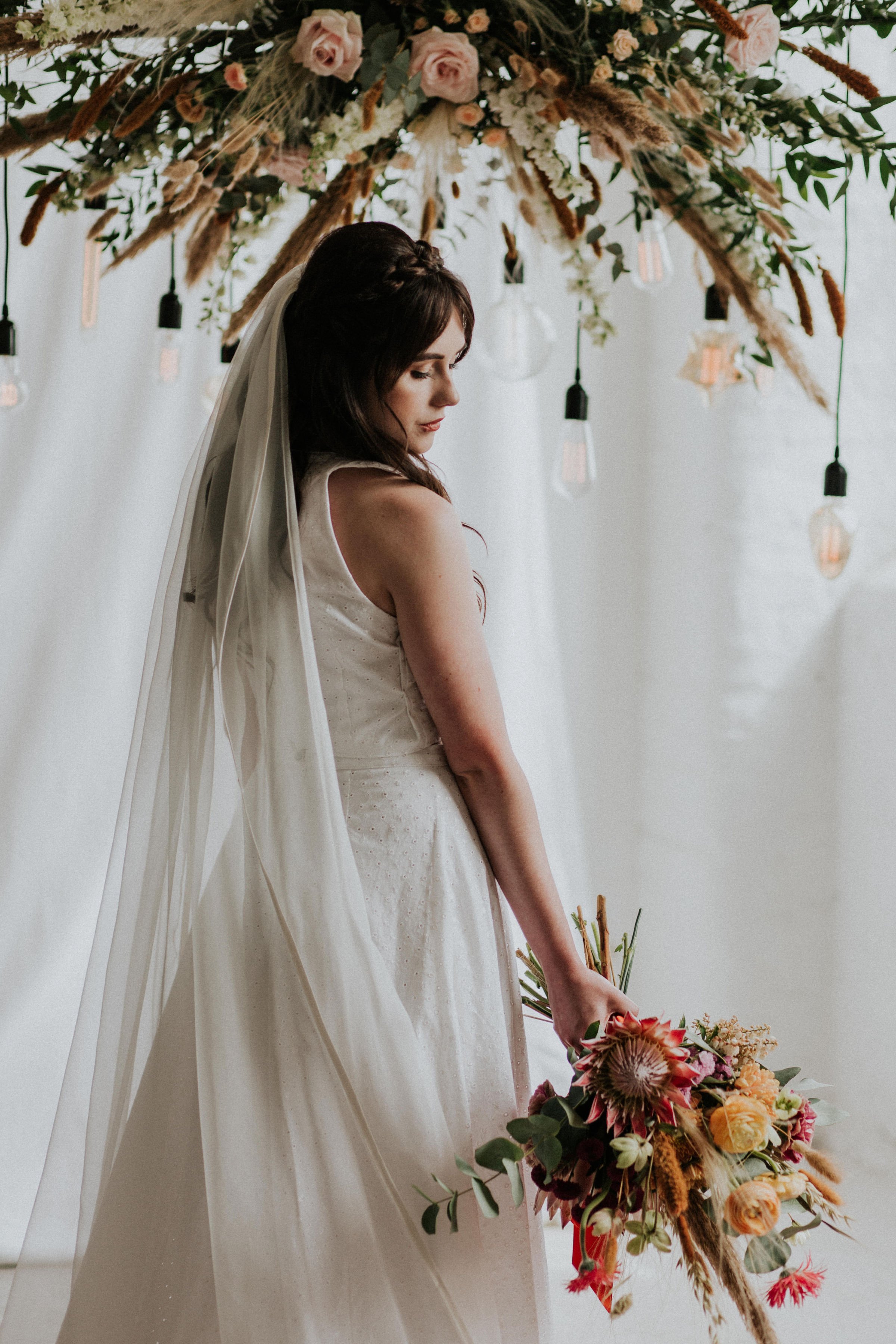Sustainable fabrics creating beautiful bridesmaid dresses.
About the fabrics I’m using
For me there are 3 key considerations when creating sustainable occasion wear at Ro&Be:
Choosing responsible fabrics these include: natural and degradable fabrics, made ethically, and using fabrics that already exist such as the vintage lace.
Creating designs you want to wear again: timeless style and comfort.
Creating designs you can wear again: adjustability and comfort.
Tencel
Tencel fabric is a manmade fabric but the most sustainable you can get. It is manufactured from wood and processed into pulp and then fibers. The benefit to tencel as opposed to choosing any viscose is the process Tencel uses. They are transparent about their processing.
“TENCEL™ Lyocell and Modal fibers is sourced from controlled or certified origins meeting FSC® or PEFC standards*, following the stringent guidelines of the Lenzing Wood and Pulp Policy.”
“TENCEL™ Lyocell fibers are produced in a closed loop process which recovers water and 99.8% of the solvent, which transforms wood pulp into cellulosic fibers with high resource efficiency and low environmental impact.”
https://www.tencel.com/fiber-story
I choose Tencel with no added stretch (which is made from elastane - plastic) for as many projects as possible so that it is fully degradable at the end of it’s hopefully long life. The Tencel I have chosen is light to mid weight and so floaty and silk like to the touch.
Like linen or silk Tencel does require ironing after the wash. Hang dry to reduce ironing and do not tumble dry it. I have discovered it can be prone to marks from greasy fingers but they have all come out with stain remover before the wash.
Tencel makes wonderful sustainable bridesmaids and flower dresses as it has that luxury feeling. It’s got drape and twirl so you feel dressed up but I find it much easier to rewear dressed up or down in comparison to a polyester dress. It is breathable and kind to skin too.
Organic Peace silk
I love this fabric! I know not everyone believes silk is an ethical material and I agree but it is a great natural fiber that is fully biodegradable. So I am only using silks that meet higher ethical standards and natural.
I use white organic peace silk fabric and chiffons grown here in the UK for bridal veils, accessories and soon gowns.
“As well as feeding our silkworms organically, we produce our silk in such a way that is ethical and sustainable. Majestic Textiles does not use any detergents or bleaches, or feed its silkworms with hormone enhancements, as is common practice amongst many producers. The silkworms are allowed a full life circle, which gives the silk ‘Peace Silk’ status. This is the ethical process of allowing the silkworms to live a complete lifecycle. The silk is not extracted from the cocoons until the metamorphosis is complete and the moth breaks free.”
https://www.organicsilks.co.uk/about/
Also in the future I am thinking of a collection using a beautiful organic peace silk that has been ethically hand loomed in India.
Organic cotton
If Tencel isn’t suitable for the design then I will use organic cotton. Organic cotton uses a lot less water than standard cotton, although Tencel uses less water than organic cotton because the water is recycled in the system.
Why organic?
Organic farming is the only system that doesn't use highly toxic substances. It's better for the environment and works for the long-term benefit of people and the planet.
https://www.soilassociation.org/take-action/organic-living/fashion-textiles/organic-cotton/
Other fabrics
I may also use other sustainable fabrics such as linen and hemp. I also use existing fabrics such as vintage cottons like old curtains or off cuts I’ve found, I do try to only use cotton but sometimes these can be a blend of poly cotton. Old pieces of lace can be poly, cotton or nylon. Any new lace I use is made from organic cotton.


